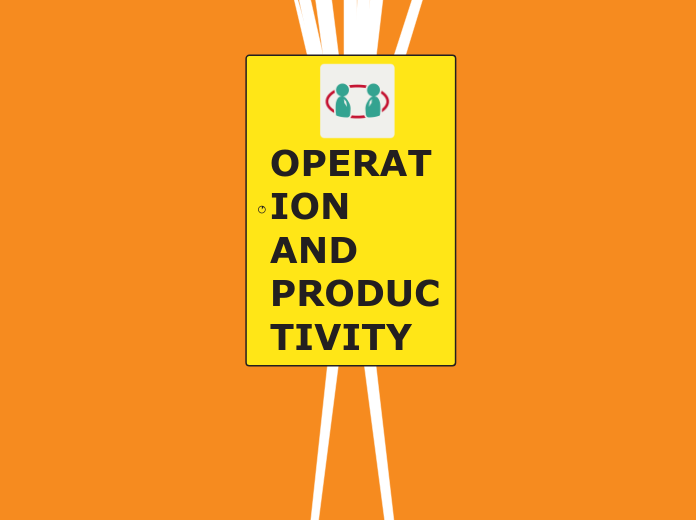
OPERATION AND PRODUCTIVITY
the supply chain
global network of organization and activities that supply a firm with goods and services
members of the supply chain collaborate to achieve high levels of customer satisfaction, efficiency, and competitive advantage
why study MO?
study how people organize themselves for productive enterprise
to know how goods and services are produced
to understand what operations managers do
such a costly part of an organization
operations managers do
basic management functions
organizing
planning
staffing
leading
controlling
the OM jobs
technology / methods
facilities / space utilization
strategic issues
response time
people / team develop
customer service
quality
cost reduction
productivity improvement
inventory reduction
strategic decision
design of goods and service
managing quality
process and capacity design
location strategy
layout strategy
human resources and job design
supply-chain management
inventory management
scheduling
maintenance
certification
APICS
ASQ
ISM
PMI
Council of Supply Management Professionals
CIPS
the heritage of operations management
operations management position
plant manager
operations analyst
quality manager
supply chain manager and planner
process improvement consultants
teory
Division of labor (Adam Smith 1776; Charles Babbage 1852)
Standardized parts (Whitney 1800)
Scientific Management (Taylor 1881)
Coordinated assembly line (Ford/ Sorenson 1913)
Gantt charts (Gantt 1916)
Motion study (Frank and Lillian Gilbreth 1922)
computer ( Atanasoff 1938)
Quality control (Shewhart 1924; Deming 1950)
CPM/PERT (DuPont 1957, Navy 1958)
Material requirements planning (Orlicky 1960)
Computer aided design (CAD 1970)
Flexible manufacturing system (FMS 1975)
Baldrige Quality Awards (1980)
Computer integrated manufacturing (1990)
Globalization(1992)
internet (1995)
contributions from
human factors
industrial engineering
management science
biological science
physical science
information technology
organizing to produce goods and service
essential function
marketing
production/operations
finance/accounting
operation management
operation
operation management ( OM )
ethics, social responsibility and sustainability
develop and produce safe, high quality green products
train, retrain, and motivate employees in a safe workplace
honor stakeholder commitments
current challenge in operations management
global focus
supply-chain partnering
sustainability
rapid product development
mass customization
learn operations
the productivity challenge
Productivity is the ratio of outputs (goods and services) divided by the inputs (resources such as labor and capital)
the economic system
inputs
transformation
outputs
productivity measurement
productivity = unit produce : input used
Single factor productivity = units produced : labor hours used
Multifactor productivity = output : (Labor + Material + Energy + Capital + Miscellaneous)
measurement problems
quality
external elements
precise units
productivity variabels
labor
capital
management
productivity and the service sector
typically labor intensive
frequently focused on unique individual attributes or desires
often an intellectual task performed by professionals
often difficult to mechanize and automate
often difficult to evaluate for quality
operations for goods and services
service pay
Perception that services are low-paying
growth for services
Service sector
The segment of the economy that includes trade, financial, lodging, education, legal, medical, and other professional occupations.
is
maufaxturers produce tangible product services often intangible
operations activities often very similar
distinction not always clear
few pure services
